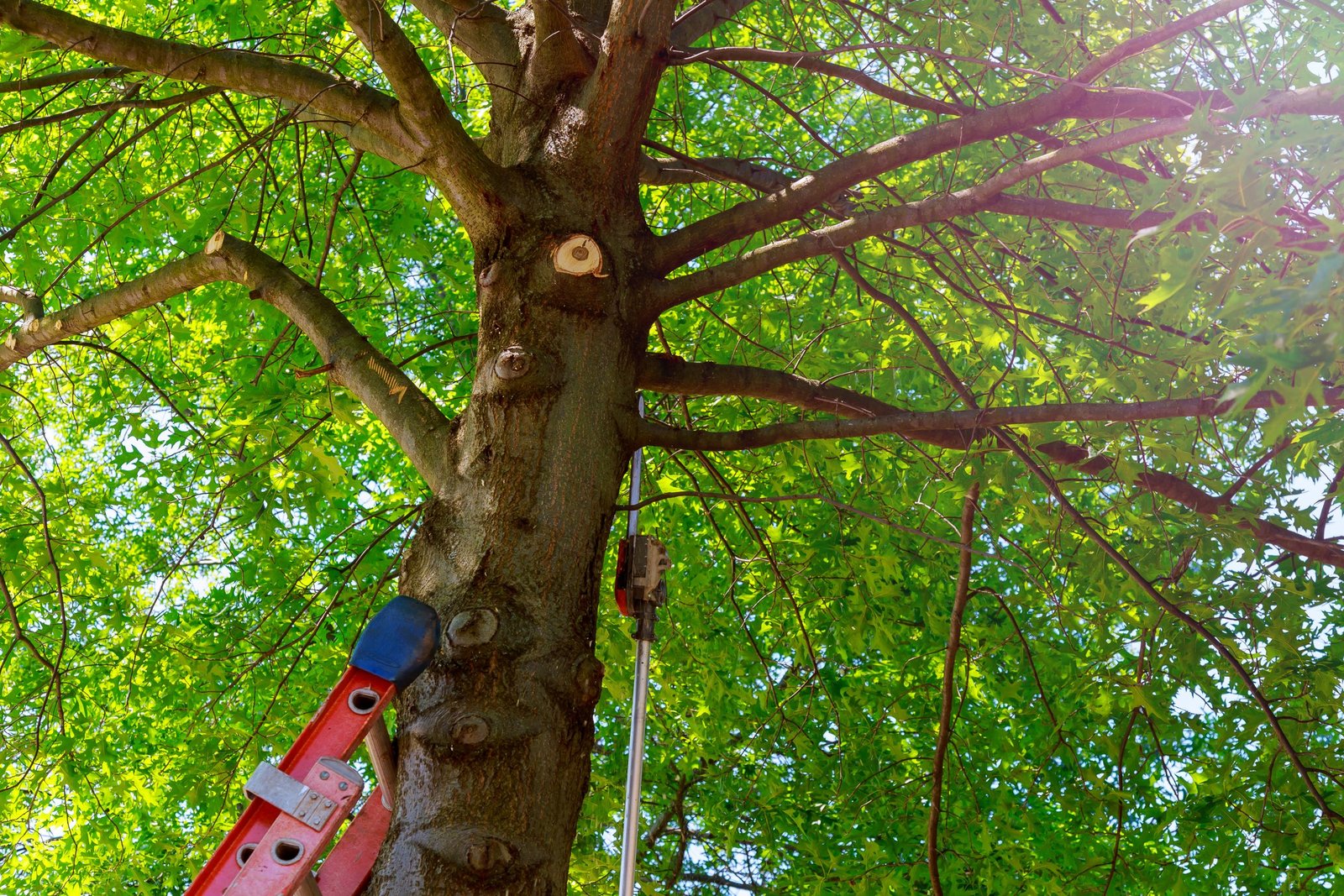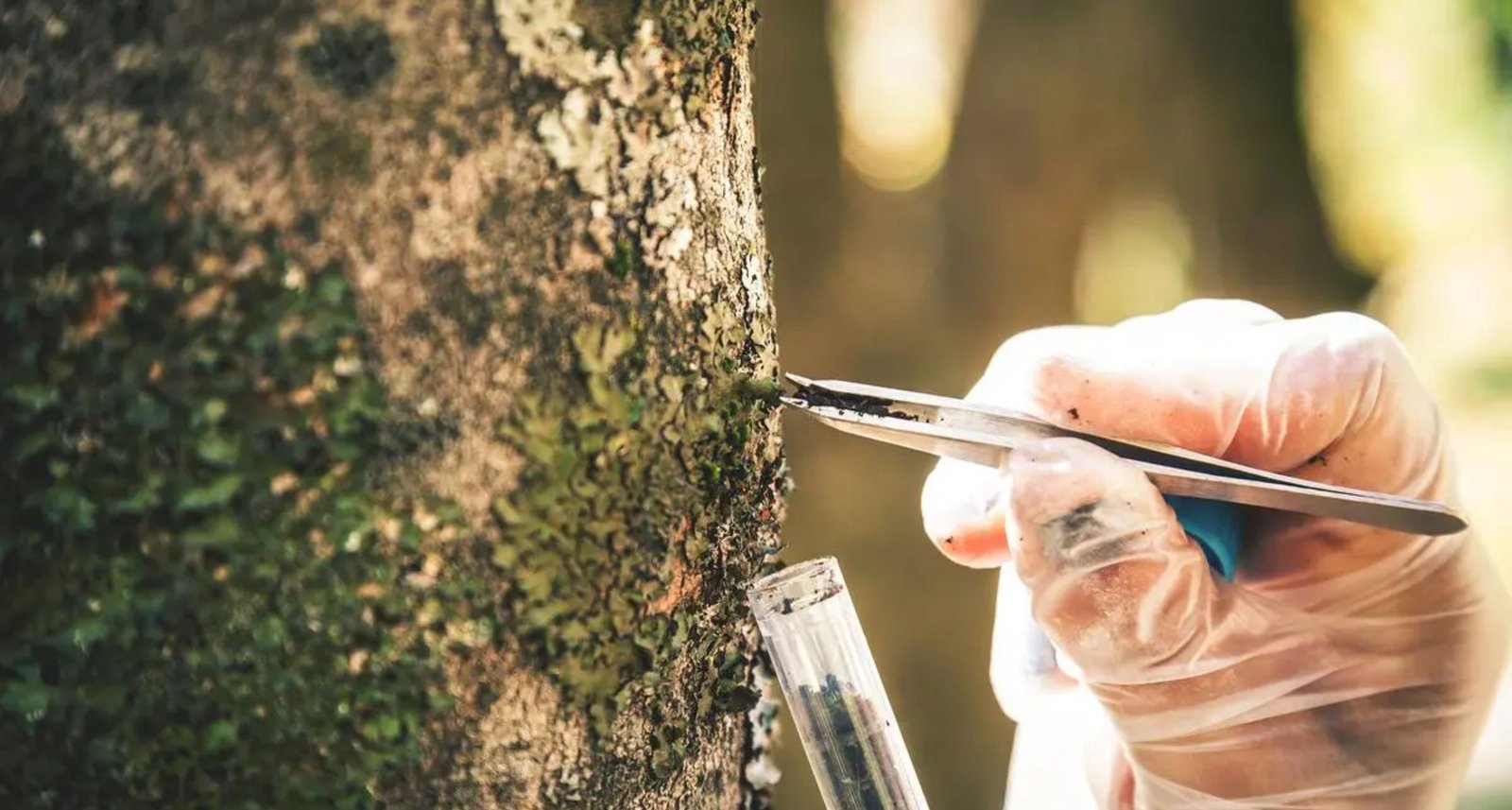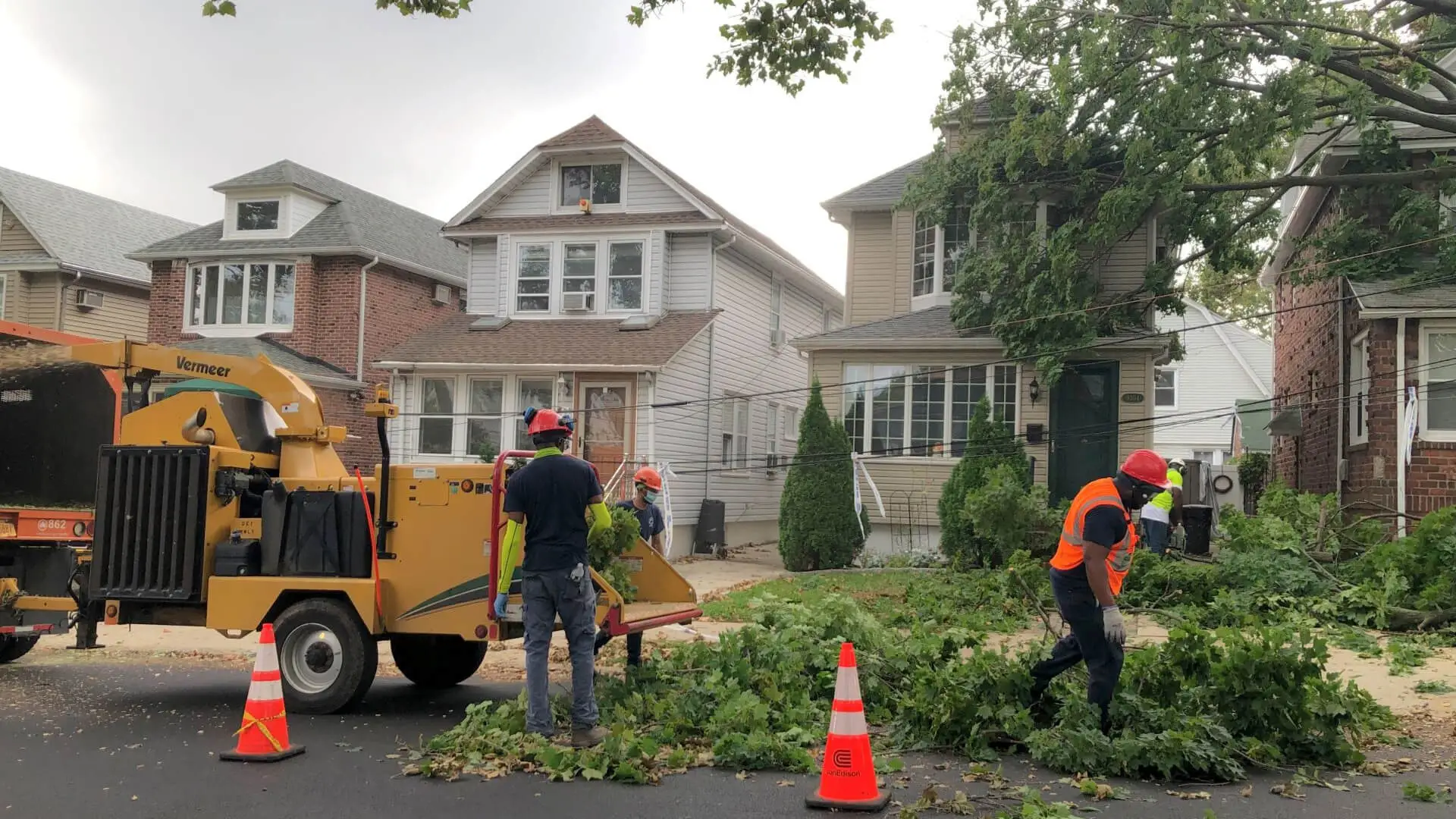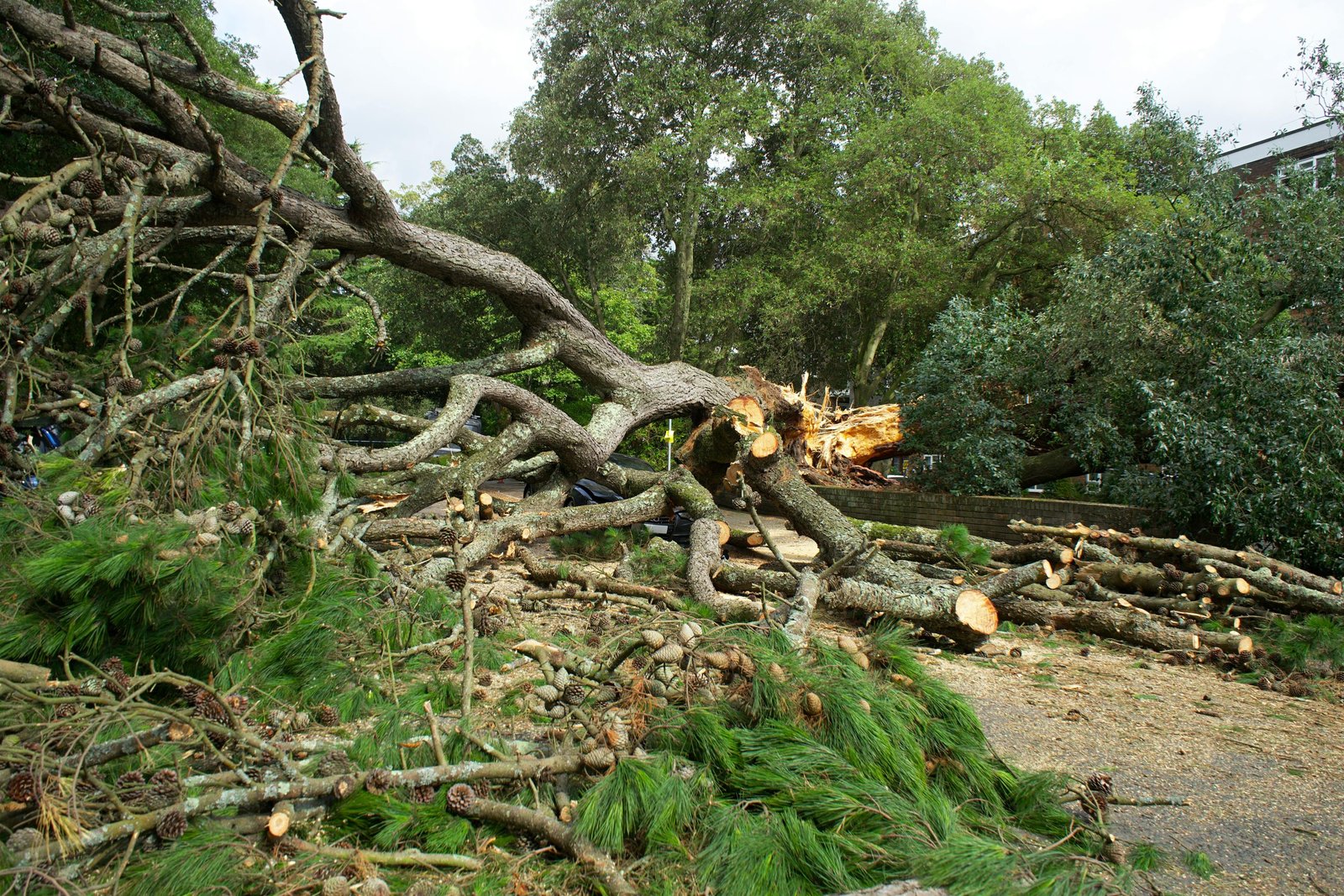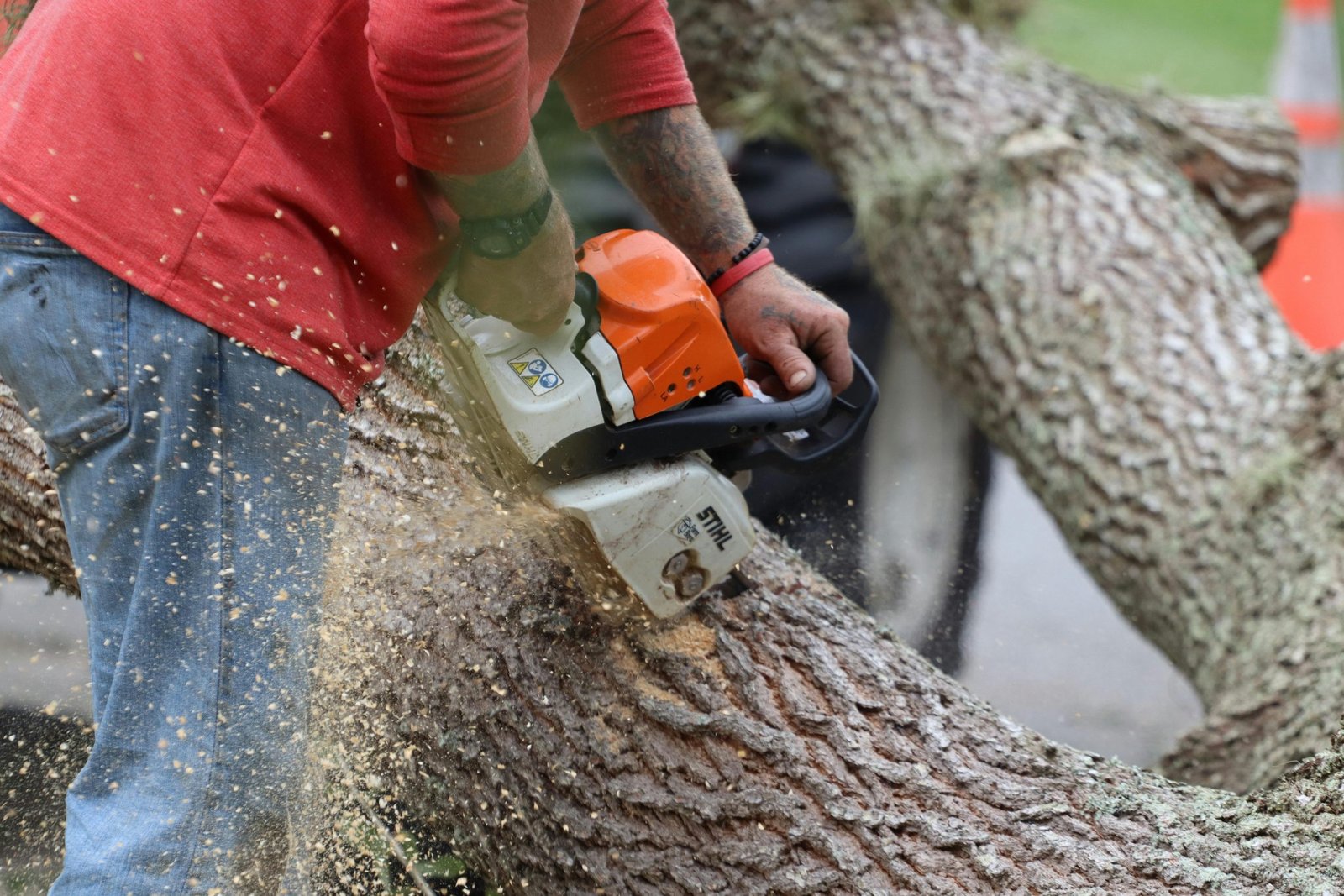Every year, storms rip through cities and backyards like wrecking balls. High winds twist trees into splinters. Heavy rain softens soil until roots rip free. And lightning? It doesn’t just strike, but it explodes trunks like firecrackers. If you have ever seen a once-beautiful tree split in half or flattened across a driveway, you know that extreme weather and tree damage go hand in hand.
But there is good news as well. With the right knowledge, you can protect your trees and your home from nature’s worst. This guide breaks down exactly what the pros do before and after major storms to keep trees strong and safe. You will learn how to spot dangerous trees and when to call an arborist to save both your money and maybe even your life.
Let’s get into it.
Why Extreme Weather and Tree Damage Go Hand-in-Hand
Trees are strong but not invincible. Wind, rain, ice, snow, and lightning — all of these are brutal forces of nature.
According to NOAA, severe storms cause billions in damage each year. Falling trees are a big reason why.
Weather affects trees:
- Strong winds push against tall trees. It cracks weak trunks or snapping limbs
- Saturated soil makes it easy for roots to lose grip.
- Ice storms and heavy snow weigh branches down until they break
- Lightning strikes cause internal burns or split trees in half
If your trees are already weak or poorly rooted, extreme weather will expose every flaw.
Common Tree Problems That Lead to Storm Damage
Many trees fail during storms. Why? Because they were already compromised.
A certified arborist can spot these red flags early but do look for any warning signs like dead limbs, fungus or mushrooms, leaning and split trunks. Some of these issues indicate internal decay while some lead to poor anchorage and are easy to break off. When these issues go untreated, the next storm could be a disaster.
Tree Species Most and Least Likely to Survive Storms
Not all trees are created equal. Some species can handle tough weather. Others? Not so much.
Tree species most likely to fall in storms:
- Bradford Pear – Brittle limbs and shallow roots
- Silver Maple – Fast-growing but weak wood
- Leyland Cypress – Top-heavy and prone to uprooting
Trees with high storm resistance:
- Live Oak – Strong structure and deep roots
- Bald Cypress – Flexible and flood-tolerant
- Southern Magnolia – Wind-resistant and sturdy
Choosing the right trees will help prevent damage.
Tree Inspection Tips from Tree Experts
Tree experts don’t just guess when a tree is risky. They use science.
Arborists use a system called TRAQ (Tree Risk Assessment Qualification). This evaluation technique helps them to evaluate tree health and storm readiness.
Pros look for:
- Weak branch connections (like V-shaped forks)
- Root exposure or soil upheaval
- Trunk cavities or internal decay
- Fungal growth at the base of the tree
- Canopy imbalance—top-heavy trees fall fast
You can do a quick DIY inspection too by checking for any cracks and dead limbs. Look for roots that poke above the ground.
Pruning and Trimming to Strengthen Trees
The number one reason trees fall in storms? Too much wind resistance. When a tree is overgrown and dense, wind gets trapped.
So, tree experts thin the canopy so the wind can pass through instead of against the tree. They:
- Remove dead or weak limbs
- Thin the crown to reduce the sail effect
- Shape young trees for long-term structure
- Cut back limbs that hang over your roof or driveway
Bracing and Cabling: Tree Protection Tools
Pruning isn’t enough for some trees. If your tree is weak, experts recommend that homeowners opt for bracing and cabling.
These systems add support to help the tree survive extreme weather.
They are especially useful for:
- Mature trees with split trunks
- Trees with heavy lateral limbs
- Historic or high-value trees you don’t want to lose
Hire a certified arborist to install these systems. Once braced, the tree will need routine inspections to ensure that the cables remain tight. These methods can add 10–15 years to a struggling tree’s life!
Planting for Prevention
Want to avoid storm damage long before a tree ever breaks? Start with smart planting.
Experts recommend:
- To plant away from power lines and buildings
- Avoid shallow-rooted species
like willow or silver maple. They may look pretty but often blow over in strong wind. - Choose wind-resistant trees.
- Test soil drainage as poor drainage leads to root rot and makes trees more likely to uproot during storms.
- Use mulch, not grass, around the trunk.
You should also consider planting in groups. Clusters of trees can protect each other by breaking wind and reducing individual exposure.
What to Do After a Storm Damages a Tree
When a storm hits, trees don’t always fall immediately. Some suffer “hidden damage” that gets worse over time.
That is why experts recommend a post-storm inspection. Especially if everything looks fine. Follow these steps:
Step 1: Assess Safety First
If a tree is leaning heavily or is near a power line—don’t go near it. Call your power company or emergency tree service.
Step 2: Look for Signs of Structural Damage
Even if a tree is standing, it may have:
- Splits or cracks in the trunk
- Uprooted roots or soil lifting at the base
- Broken limbs that are still attached but unstable
- Bark that has been torn or stripped away
These signs indicate internal weakness. They are a major risk during the next storm.
Step 3: Call a Certified Arborist
An ISA-certified arborist can help to evaluate the health of your tree.
They may recommend:
- Pruning and cabling for partial damage
- Soil aeration or mulching if the roots are exposed
- Full removal if the tree is too compromised
Conclusion: What Tree Experts Want You to Remember
Storms aren’t optional. But the damage they cause? That is. The most successful tree owners don’t hope for good luck during extreme weather. They plan to inspect and plant it with purpose! Maintain your tree’s health to protect your lifelong investments and safeguard your property.
Want professional tree care for your greens? BX Tree Service is the right option for you. We utilize cutting-edge equipment to protect your home and keep your landscape strong and secure. Contact us today for a landscape assessment. We assure you won’t regret it!


